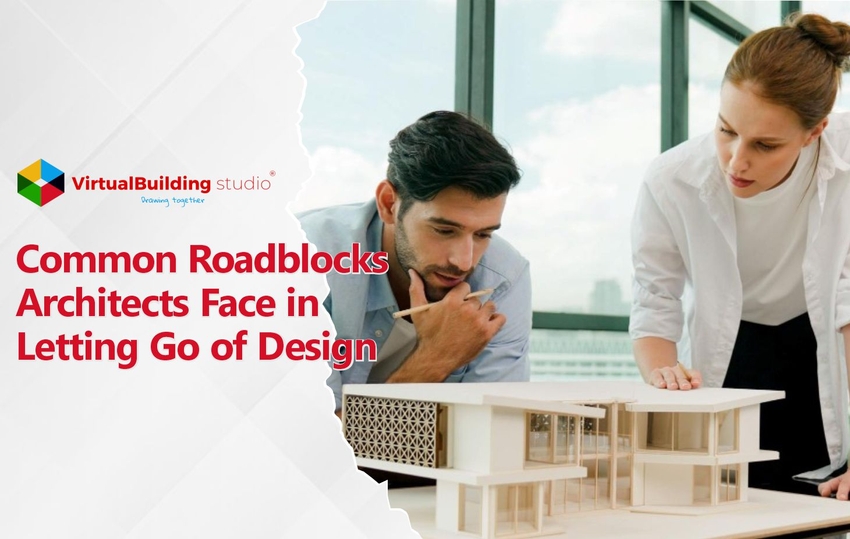
For many architects, stepping away from daily design work can feel like an unsettling shift. The creative process is deeply personal. Each project carries the imprint of countless hours of thought, refinement, and expertise.
Yet, as architectural firms grow, the demands of leadership, client relations, marketing, and operations begin to overshadow hands-on design. The transition from designer to firm leader is not just a structural shift; it’s an emotional and professional evolution that challenges long-held instincts.
This struggle is universal. Architects often find themselves torn between their passion for shaping spaces and the practical necessity of running a business. The fear of letting go stems from concerns about maintaining design integrity, ensuring quality control, and trusting a team to execute their vision.
But stepping back doesn’t mean abandoning design, it means redefining how design is managed and scaled.
In our latest webinar, we discussed how architects can successfully transition by strategically delegating, adopting BIM and automation tools, and implementing clear quality control processes. This shift allows architects to focus on creating exceptional spaces while empowering their teams.
This blog explores why architects struggle to let go of design and offers strategies to navigate this transition confidently. If you have felt torn between designing and leading, you're not alone—this is for you.
Design is My Identity: Reframing Leadership as an Extension of Creativity
We know, for architects, design is more than a profession; it’s their identity. Every project reflects years of creativity, expertise, and personal expression. The fear of losing creative control makes it challenging to step back, as architects may feel like sacrificing artistic integrity. But leadership is simply another form of design - designing the team, designing the business. Just as an architect carefully crafts a blueprint, structuring a firm allows creativity to scale. By building skilled teams, setting clear review processes, and leveraging technology like BIM, architects ensure their vision thrives beyond their direct involvement.
Successful firms don’t abandon design; they evolve. The principles that shape great architecture are balance, proportion, and adaptability. Apply them to structuring businesses. A well-led firm amplifies creativity, allowing architects to focus on innovation while their teams bring visions to life with precision.
Letting go isn’t about losing creative control; it’s about ensuring design excellence endures. Architects don’t stop shaping spaces; they start shaping the ecosystem that makes great design possible.
Fear of Quality Drop: Why Delegation Strengthens, Not Weakens, Design
Architects often hesitate to delegate, fearing that handing off tasks will lead to mistakes or a diluted vision. But delegation doesn’t mean sacrificing quality, it’s about ensuring excellence through structured systems. Trust is built through well-defined processes, where every stage of drafting and execution aligns with the firm’s design philosophy. Training programs equip teams with the skills to uphold high standards, while checklists and review protocols prevent errors before they impact the final product.
Successful firms don’t rely solely on individual brilliance; they create a framework where consistency and precision thrive. Instead of micromanaging, architects can lead by establishing systems that guarantee excellence across all projects.
Letting go is not about losing control; it’s about ensuring that quality becomes repeatable, scalable, and deeply embedded in the firm’s workflow.
“It’s Faster If I Do It"—The Cost of Short-Term Thinking
Many architects believe that handling tasks themselves is the quickest way to maintain control and efficiency. But this mindset often traps professionals in a cycle of constant workload that stifles long-term growth.
What seems like saving time today can lead to overwork, missed opportunities, and stalled firm development. Instead of focusing on strategic priorities, architects get caught in repetitive tasks, drafting, documentation, and project coordination, which could be efficiently managed by a skilled in-house or virtual team.
Delegation requires an upfront investment in training, systems, and clear processes, but the payoff is significant. Once tasks are properly assigned, architects free up hours to focus on high-impact work such as designing, leading, and growing their firm.
The best firms don’t succeed by doing everything alone; they scale by empowering teams, refining workflows, and trusting their processes.
Letting go today builds sustainability for tomorrow. Architects who transition from doing to leading foster firms where efficiency and creativity flourish in every project.
Lack of a Trusted Team: How External Partners Solve the Bottleneck
For many architecture firms, the biggest barrier to scaling is finding reliable talent. Internal hiring demands time, training, and long-term commitments, often restricting agility and slowing project execution. Without the right team in place, architects end up doing everything themselves, limiting growth and efficiency.
This is where trusted external partners like Virtual Building Studio provide a smarter solution. Rather than navigating lengthy recruitment cycles, firms can access dedicated resources and expert teams that align with project needs. With Architect Level I, II, III, and IV efficiency, Virtual Studio ensures that only skilled professionals handle drafting, modeling, and documentation.
The flexibility to scale up or down without long-term commitments makes external partnerships ideal for firms seeking reliable support without overhead costs. Whether it’s managing peak workloads or expanding capabilities, external experts offer specialized skills tailored to architectural workflows. By leveraging proven systems and experienced professionals, firms maintain design integrity while optimizing efficiency, eliminating bottlenecks, and creating a foundation for sustainable growth. The right team isn’t always hired, it’s strategically built through trusted partnerships.
Conclusion
Letting go of design doesn’t mean letting go of excellence. It means creating the space for others to grow, for your firm to evolve, and for you to focus on the bigger picture. Whether that’s leading visionary projects, nurturing client relationships, or steering your business toward long-term success. The truth is, holding onto every detail can limit both your creative energy and your firm’s potential.
By shifting your mindset, you can begin to see leadership itself as a design challenge. One where you are crafting the right team, building effective systems, and setting the tone for quality and innovation. Delegating isn’t a loss of control; it’s a strategic move to preserve and elevate the standard you have worked so hard to establish.




